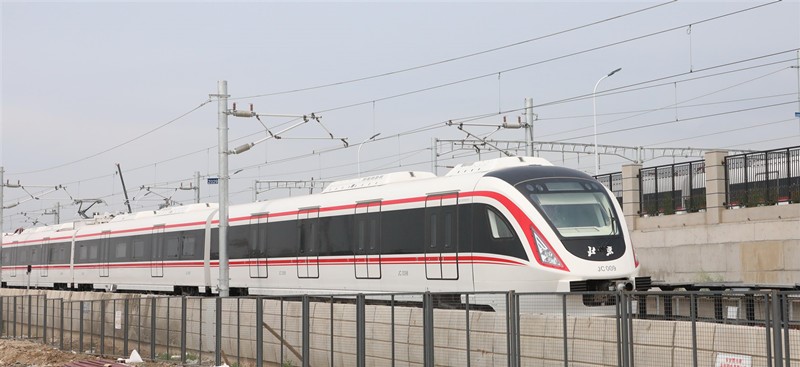(Global Times)16:13, June 20, 2019![]()

On June 15, 2019, the first phase of the New Beluga train of Beijing New Airport Line was air-tested. The new line of the new airport line runs at a highest speed of 160 kilometers per hour, and has a speed of 117 kilometers per hour. (Photo by Liu Xianguo from People’s Daily Online)
The first phase of Beijing rail transit’s new airport line, as one of the support facilities for the Beijing Daxing International Airport, launched trial operation on Saturday, June 16. It’s scheduled to start official operations at the end of September, according to media reports.
With a top speed of 160 kilometers per hour, it only takes 19 minutes to make the entire 41.4-kilometer trip, the Xinhua News Agency reported on June 16.
Hailed as a “new milestone in Beijing’s rail transit program, the new airport line adopts the worlds highest standards of autonomous driving … including the whole process of automatic starting, self-inspection, operations and dormancy,” according to Xinhua.
The line, which is also an important factor in driving the coordinated development of the Beijing-Tianjin-Hebei region, the new airport line will accelerate economic integration of the area, according to Xinhua, citing comments of Yang Guangwu, chief engineer at the Beijing Major Projects Construction Headquarters Office.
Located in the center of the Beijing-Tianjin-Hebei triangle area, the Beijing Daxing International Airport aims to boost economic vitality of areas surrounding Beijing and cultivate a world-class airport cluster together with other airports in Beijing, Tianjin and Hebei Province, according to People’s Daily in May.
The airport’s terminal complex has a total area of 1.42 million square meters. The airport aims to handle 72 million passenger trips and 2 million tons of cargo and mail by 2025, with 620,000 aircraft movements by 2025, reported CCTV.com in February.






